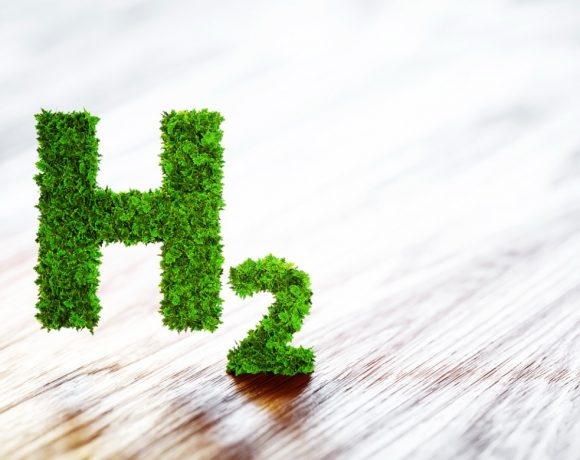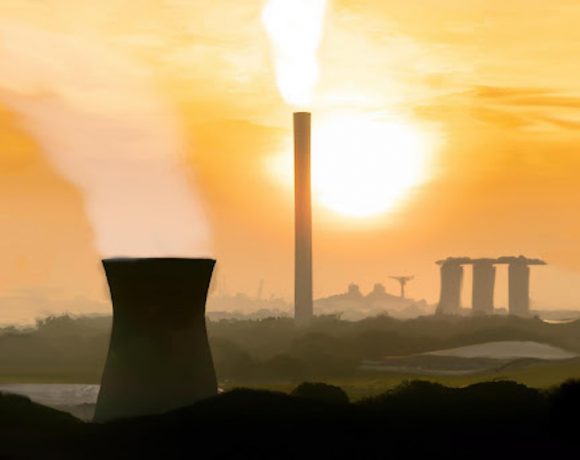- China’s leadership is confronted with a challenging task, as it aims to maintain the country’s brisk pace of economic development, while simultaneously pursuing a series of demanding decarbonisation targets to meet its ambitious carbon-neutrality goals.
- To achieve this, the 14th Five Year Plan, in particular, emphasises that China will focus on limiting carbon and energy intensity, while also strengthening its domestic energy supply.
In March 2021, the National People’s Congress (NPC) approved the “Outline of the People’s Republic of China 14th Five-Year Plan for National Economic and Social Development and Long-Range Objectives for 2035” (outline), thereby providing China with a comprehensive blueprint to guide its overall economic and social development until 2025. Among others, this document includes a wide range of energy and climate targets, which largely reconfirm China’s commitment to peaking CO2 emissions by 2030 and achieving carbon neutrality by 2060.
Key energy-related targets
In a nutshell, the outline primarily focuses on carbon intensity control while placing a secondary emphasis on total carbon emission control. This is most notably reflected in the inclusion of binding reduction targets of 18% and 13.5% for carbon and energy intensity, respectively, and the omission – for now – of a formal carbon emissions cap. The outline moreover stipulates that the share of non-fossil fuel energy sources in the total energy mix should be increased to approximately 20%, thereby underlining the importance of China’s transition towards clean, low-carbon energy sources. Finally, for the first time since 1986, the outline does not include a numerical GDP growth target. Instead, it introduced a more flexible approach, whereby “proposals for the average annual growth of GDP will be maintained in a reasonable range based on the situation each year.” For example, in 2021, Premier Li Keqiang expects GDP growth to exceed six percent.
Despite the considerable number of targets contained in the document, it is important to emphasise that the outline only provides a preliminary glimpse of the country’s overarching objectives. Additional details will subsequently be provided by forthcoming sector and regional specific plans.
Key energy sources
China’s leadership unquestionably is confronted with a challenging task: maintain the country’s brisk pace of economic development while simultaneously pursuing a series of demanding decarbonisation targets to meet its ambitious carbon-neutrality goals.
In this context, it comes as no surprise that the development of energy from non-fossil fuel sources receives ample support from the outline. After all, China’s power and industry sectors account for nearly 80% of its annual CO2 emissions. To support this energy transition, the outline therefore notably stipulates that China will “vigorously increase the scale of wind power and photovoltaic power generation, […] orderly develop offshore wind power, [and] accelerate the construction of the Southwest Hydropower Base.”
These aspirations are in turn complemented by further calls to:
- “develop and utilise geothermal energy”;
- “improve the utilisation rate of ultra-high voltage (UHV) transmission channels”;
- “accelerate the intelligent transformation of grid infrastructure”;
- “accelerate the construction of pumped storage power stations and the large-scale application of new energy storage technologies”; as well as to
- construct a “batch of multi-energy complementarity clean energy bases,” which generally integrate renewable power generation with new storage technologies.
The outline furthermore asserts that China’s installed operating capacity of nuclear power will reach 70 GW by 2025, as well as implicitly reaffirms the role of natural gas as a transition fuel.
Notwithstanding the emphasis on the low carbon transition, the outline also stresses the need to improve China’s energy security. To achieve this, it, in particular, introduced the country’s first binding target for domestic energy production, which is currently set to exceed 4.6 billion metric tons of standard coal equivalent by 2025. Although this comprises all forms of energy, coal will undoubtedly play a significant role in reaching this goal, as reflected by the inclusion of several references to the development of coal in the outline – albeit while underlining its “clean and efficient” use.
The role of science, technology, and innovation
It is also worth mentioning that the outline acknowledges the significant contributions that basic scientific research and technological innovation can make towards the successful realisation of China’s energy transition. For example, the outline announced an increase in the country’s research and development expenditure of more than seven percent annually – at least eight percent of which will be spent on basic research. In addition, the outline highlights China’s intention to advance its core manufacturing competencies, such as high-end new materials, smart manufacturing, and new energy vehicles. These also include several energy-related applications such as key nuclear power plant components, large liquefied natural gas ships, and deep-sea oil and gas production platforms. Finally, the outline lists two major national S&T infrastructure priorities, which are relevant to the energy sector, namely, comprehensive research facilities for critical systems of fusion reactors and high-efficiency low-carbon gas turbine test equipment.
Conclusion and outlook
Although numerous details still need to be clarified in the forthcoming sector and regional-specific plans, the outline of the 14th FYP already sets a strong signal that China will focus on limiting carbon and energy intensity while also strengthening its domestic energy supply. This implies that although there will be a clear push to increase the amount of energy generated from non-fossil fuel sources, coal will likely continue to figure strongly in China’s energy mix for the coming years as well. Furthermore, according to numerous experts, the absence of growth targets constitutes a positive step for the environment, compared to the previous “growth-at-all-costs mentality.” Considering that China has exceeded the CO2 intensity targets of its previous two FYPs, it appears as though the country is advancing steadily towards achieving its decarbonisation targets.
Key links:
Original full text of the 14 FYP outline (State Council): http://www.gov.cn/xinwen/2021-03/13/content_5592681.htm Full-text English translation of the 14 FYP outline (CSET): https://cset.georgetown.edu/publication/china-14th-five-year-plan/
References:






NO COMMENT